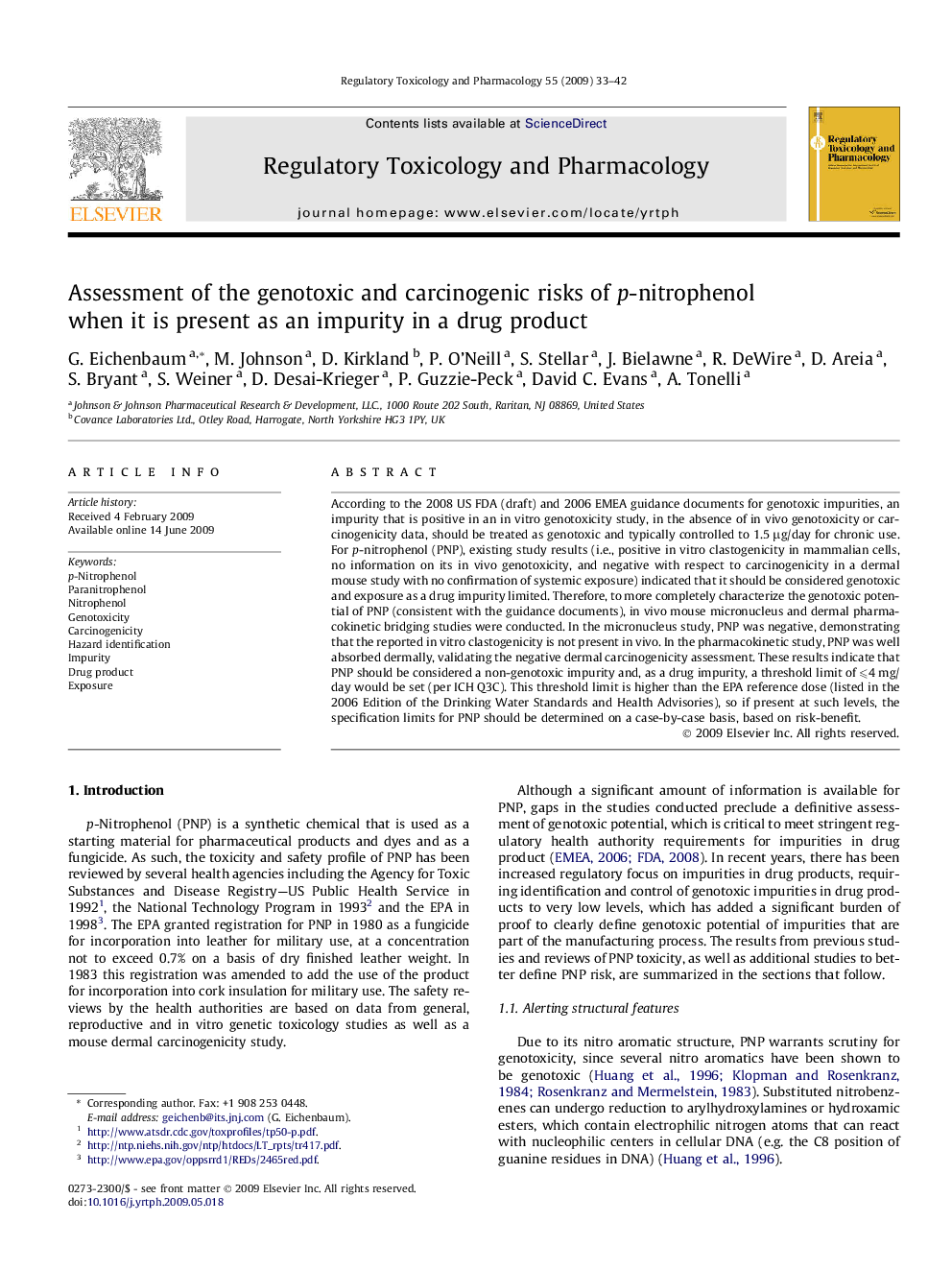| Article ID | Journal | Published Year | Pages | File Type |
|---|---|---|---|---|
| 2592844 | Regulatory Toxicology and Pharmacology | 2009 | 10 Pages |
According to the 2008 US FDA (draft) and 2006 EMEA guidance documents for genotoxic impurities, an impurity that is positive in an in vitro genotoxicity study, in the absence of in vivo genotoxicity or carcinogenicity data, should be treated as genotoxic and typically controlled to 1.5 μg/day for chronic use. For p-nitrophenol (PNP), existing study results (i.e., positive in vitro clastogenicity in mammalian cells, no information on its in vivo genotoxicity, and negative with respect to carcinogenicity in a dermal mouse study with no confirmation of systemic exposure) indicated that it should be considered genotoxic and exposure as a drug impurity limited. Therefore, to more completely characterize the genotoxic potential of PNP (consistent with the guidance documents), in vivo mouse micronucleus and dermal pharmacokinetic bridging studies were conducted. In the micronucleus study, PNP was negative, demonstrating that the reported in vitro clastogenicity is not present in vivo. In the pharmacokinetic study, PNP was well absorbed dermally, validating the negative dermal carcinogenicity assessment. These results indicate that PNP should be considered a non-genotoxic impurity and, as a drug impurity, a threshold limit of ⩽4 mg/day would be set (per ICH Q3C). This threshold limit is higher than the EPA reference dose (listed in the 2006 Edition of the Drinking Water Standards and Health Advisories), so if present at such levels, the specification limits for PNP should be determined on a case-by-case basis, based on risk-benefit.
